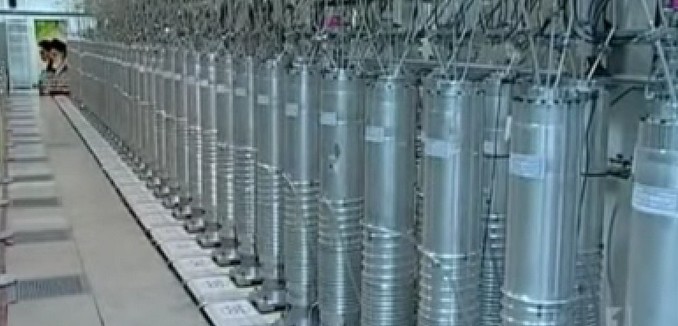Iran’s nuclear program is vulnerable to both military attack and economic pressure, Middle East expert Lee Smith argued in an essay that appears in the current issue of The Weekly Standard.
While Smith acknowledged that “you can’t bomb knowledge,” or, in other words, make Iranian nuclear scientists forget their technical knowledge, a nuclear program has infrastructure that is inherently vulnerable.
Referring to an argument made by Israeli Prime Minister Benjamin Netanyahu in his speech to Congress earlier this month, Smith wrote:
During his speech to Congress earlier this month, Israeli prime minister Benjamin Netanyahu addressed this very issue, noting the argument that “Iran’s nuclear know-how cannot be erased, that its nuclear program is so advanced that the best we can do is delay the inevitable.” But as Netanyahu then suggested, “nuclear know-how without nuclear infrastructure doesn’t get you very much.”
Here “infrastructure” is perhaps best understood to mean not only the facilities, equipment, and personnel necessary to run a nuclear weapons program, but also any given nation’s industrial and technological culture, its economy, and perhaps most important the society that produces them. The Islamic Republic of Iran comes up short in all these vital areas. And that’s why it has taken Tehran 25 years to buy, steal, and smuggle a nuclear weapons program from the outside world. The notion that it would take Iran only two to three years to restore a program it has taken more than two decades and tens if not hundreds of billions of dollars to build does not add up.
Journalist David Samuels explained to Smith that acquiring the knowledge is actually the easy part of creating a nuclear bomb.
What’s really difficult is building and maintaining the industrial, technological, and economic complex required to sustain a nuclear weapons program. The capacity to produce a nuclear weapon is a good index of a country’s general level of development. “It’s not a big deal for the United States, the U.K., or France, for instance, to support that kind of endeavor,” says Samuels. “Same with Germany, which if it wanted a bomb would get there within a matter of months. Germany, the land of precision machinery, has an economy and the industrial and technological culture that can sustain a national project of that scale. Same with Japan. Iran is a very different matter.”
Proponents of the deal being negotiated argue that since a military strike would, at best, add one or two years to Iran’s breakout time, a deal that constrains Iran’s nuclear program for ten years will be a better guarantee that Iran couldn’t develop a bomb. But because of the difficulties of building, maintaining and, if necessary, reconstituting a nuclear program, the timeline to a bomb after a strike would likely be much longer.
The Smith/Samuels analysis also has implications for continuing the current sanctions regime. Iran’s foreign minister and chief nuclear negotiator, Mohammad Javad Zarif, argued in an interview last September that the imposition of sanctions has been counterproductive.
The net result of all these sanctions is that when the sanctions started to be imposed, we had less than two hundred centrifuges. Today, we have twenty thousand.
Zarif is conflating correlation with causation. Because a nuclear program requires a huge investment in infrastructure, the building of centrifuges was done in spite of the sanctions, not because of them. Rather than indicating that sanctions failed, Zarif’s argument underscores the lengths Iran went to defy six United Nations Security Council resolutions calling on it to stop enriching uranium until it came into compliance with its Nuclear Nonproliferation Treaty obligations.
[Photo: ABC News (Australia) / YouTube ]




